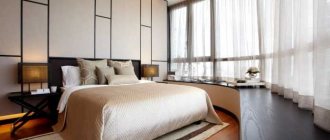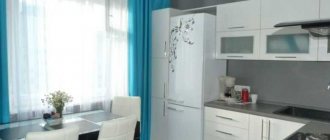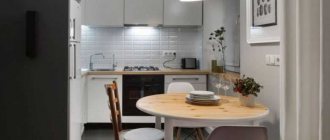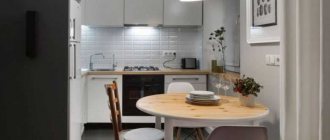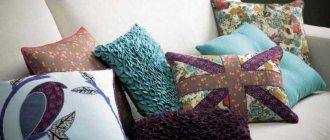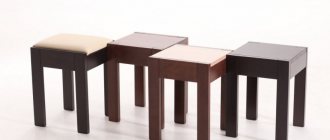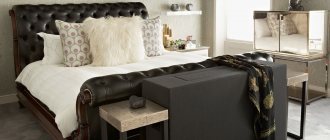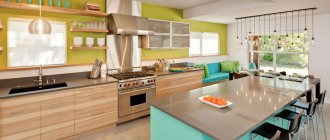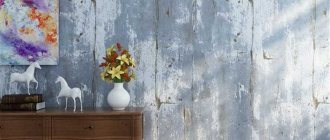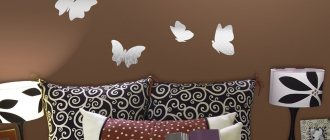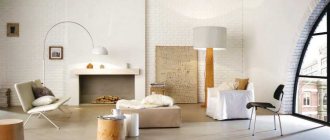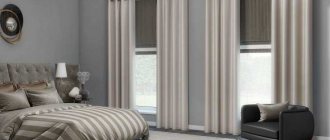Purpose
Even decorative pillows have not lost their practical purpose - to bring comfort. Most often in everyday life you can find sofa cushions - they most often have a quadrangular or round shape, less often - in the form of bolsters and are designed for a more comfortable position of the back.
Also, small and elegant pillows fit perfectly into the decor of a children's room. Their shapes can be varied: crowns, pillows - letters, animals. In this case, the choice of textile decor depends only on your imagination.
Chair cushions are most often used in kitchens, making the interior a little softer and softer. Typically, simple quadrangular pillows are used, attached with ties to the seats and backs of chairs.
Colors and textures
One of the main rules for using textiles in the interior is the use of the right color scheme. Try to choose the colors of the fabrics so that they overlap not only with each other, but also with the color of the walls, ceilings and floors. The main rule is not to overload the surrounding space with an abundance of drawings and prints. If wallpaper with a massive pattern is pasted on the walls, then try to use plain fabrics without patterns.
You can also play with textures - for glossy walls, use matte textiles and vice versa. This technique will give the home more volume and depth.
The aerobatics of design is the use of accent items in the interior. It is best to look for ready-made photos of bright decorative pillows in the interior - this will help you choose the right accent color for the room.
Characteristics of a gray sofa in design
Gray upholstery of upholstered furniture is considered classic for the high-tech style, but can also become a balancing element for brighter trends: fusion, avant-garde, boho, bright modern. It also pairs well with other more classic home design styles: classic, country, modern or minimalist.
This color goes well with both cool shades, such as purple, turquoise or blue, and warm ones, such as red or pink, yellow or orange. It is the discreet visual perception of this color scheme that allows it to be decorated with interior elements of different colors. The color palette will help you in more detail with the selection of the desired range.
For those people for whom the living room is exclusively a place of peace and tranquility, we recommend using various shades of “mouse” with similar tones in the design of their living space: white, beige, light brown.
This palette is typical of minimalism or Scandinavian style. In this case, it is better to decorate upholstered furniture with a plain blanket or bedspread, carpet or curtains in the same tone: dark with lighter shades or vice versa. Examples of plain blankets are presented.
But as we have already noted, all variations of this color are in perfect harmony with others, and therefore we will further consider combinations with various colors.
You may also be interested: 5 color combinations for the living room with photo examples
Materials
Modern industry has given us a variety of materials for sewing pillowcases for decorative pillows. Depending on the style of the room, satin, cotton, velvet, fur, tapestry, viscose and many others can be used.
There are restrictions on the use of fabrics only for the children's room - it is advisable to use only natural fabrics in it. When choosing textiles for a nursery, you need to pay attention to its quality.
Note!
Duvet: TOP-170 photos + video reviews of duvets. Advantages and disadvantages of filler, choice of cover and quiltingBed linen for newborns: requirements for bedding for a newborn. Variety of sizes, materials and patterns of children's underwear (photo + video)
Double bed linen: TOP-170 photo reviews of new designs, choice of size, color and material
When choosing fabric, it is best to ask the seller for a quality certificate - a guarantee that the fabric is completely safe for use and will not cause an allergic reaction in a child.
DIY pillows
It is most practical to sew a pillow with your own hands - this way you are guaranteed to receive a product of the desired color, shape and softness.
Cushion
The furniture cushion that complements the sofa usually has a simple geometric shape. Most often it is a rectangle.
Such items are subject to wear and tear during use faster than the sofa itself. The opportunity to buy a similar pillow is not provided by furniture manufacturers.
Therefore, there is a need to sew such a pillow yourself. This is a simple job, most of the success of which lies in the correct selection of material for the cover.
If possible, the fabric should be found similar to the upholstery of the sofa. If there is no such fabric, then you need to think through the design of a new pillow so that it fits organically into the interior.
In any case, the texture should match the upholstery of the sofa, and the color should be in harmony with the design of the room.
The easiest way to copy a factory copy is to rip open the old one and measure the cover.
Using these measurements, draw a drawing, cut and seam the parts of the new product.
Standard pillow
The unspoken standard for this product is the size of 30 by 30 cm. Making a pillow of this size is not difficult - a simple master class will help. For this you will need: a piece of plain light-colored cotton fabric, a ruler, a simple pencil, threads matching the color of the fabric, scissors, filler.
First you need to cut the fabric, drawing a rectangle with sides 60 by 30 cm. You need to cut the workpiece taking into account seam allowances - leave 1-2 cm of fabric on each side. Fold the piece in half, wrong side out, to form a square and stitch around the edges, leaving a small pocket.
Turn the workpiece inside out through the pocket and fill it with filler. It is best to use hypoallergenic holofiber for this purpose. Then sew the pocket closed with a blind stitch.
It’s easy to sew a pillowcase for such a pillow - just increase the length and width of the pattern by 10 cm, and insert a thin zipper into one of the sides of the pillowcase.
Note!
Pillow for pregnant women - TOP 160 photos + video reviews of pillow designs for pregnant women. Properties and purpose of the pillow. Types of fillers and coversSofa decks: TOP-130 photos and videos of sofa deck design options for a sofa and armchair. Features of application, choice of color and material of manufacture
Envelope blanket - TOP 150 photos + video reviews of baby envelope blanket designs. Types of safe fabric materials, colors and prints of blankets
What is necessary?
To do this work yourself, you will need a small list of items.
These include:
- Fabric or other material. They must be of the appropriate size;
- Paper, pencil. Used to prepare patterns;
- Scissors. Allows you to cut the product;
- Padding material. Synthetic padding polyester, foam rubber, etc. are perfect for it;
- Threads, needles, sewing machine;
- Decorative elements. When choosing them, the style of the room and the personal preferences of the owners are taken into account.
Do-it-yourself cutting has a number of features and nuances that are important to know about. Otherwise, mistakes will be made. They will be reflected in the overall appearance of the finished product. The padding material will shrink. Therefore, you will need to make a margin of several centimeters in width and length on the fabric, but do not take into account the seam allowance. Moreover, it must be at least one centimeter. If the product has folds or hems, they are calculated separately.
See alsoHow to use papier-mâché in the interior
Cloud
A cloud-shaped pillow can be a cute and soft addition to the side of a baby's crib. To make it you will need:
- natural cotton fabric (blue, dark blue, white or turquoise);
- cotton threads in the color of the fabric;
- floss (black and pink);
- needles for floss;
- hoop;
- pencil;
- ruler;
- scissors;
- holofiber;
- paper.
Draw the outline of the future product on paper, making the lower part of the cloud even. Transfer the pattern to the fabric and cut out 2 parts of the pillow, taking into account the allowances. On one of the parts of the blank, using a pencil, draw closed eyes, a mouth and a blush and embroider them with floss threads.
It is absolutely forbidden to use ready-made doll eyes, buttons and other accessories - a child can easily tear off small parts that can easily get into the stomach or respiratory tract.
Next, pin the parts together with the front parts facing inward and stitch the edges along the intended contour, leaving a pocket at the bottom. Through the resulting pocket, turn the product inside out, fill it with holofiber and sew it up by hand
Beginning of work
The first step in creating an interior pillow is to think about its purpose and appearance.
Having decided on the application, design, color and size of the future product, it is important to choose the right fabric for sewing.
The material should be in harmony with the rest of the home furnishings and correspond to the intended sketch.
Chair cushion
Cushions for chairs are made no more complicated than standard ones, but you need to create patterns yourself, depending on the model of the chair.
Note!
- Children's blanket: criteria for choosing a blanket for children. A variety of sizes, materials and patterns of children's blankets. Rules for caring for a child’s blanket (photo + video)
Bedspread for a sofa: TOP-140 photos and videos of design options for a bedspread for a sofa. Features of the use of the bedspread, choice of color and material
- Wool blanket: options for using wool blankets. Advantages and disadvantages of wool, varieties of sizes and shapes of blankets (photo + video)
The easiest way is to put a newspaper on the seat and trace its edges with a pencil. It is better to transfer the resulting pattern onto cardboard for convenience. Next, cut out 2 blanks for the pillow from the fabric and stitch them from the wrong side, leaving a hole for the filling. Turn the pillow inside out and fill it with padding polyester, and then sew the side tightly.
To prevent the filling from getting into clumps during use, the pillow can be stitched or stitched with buttons - in this case they will also be a decorative element. It would not be amiss to use grosgrain ribbon ties at the corners of the product.
Filler
To fill pillows, natural, synthetic non-woven materials and natural raw materials are usually used.
Natural padding includes:
- down and/or feather of a bird,
- animal fur.
Such a filler requires high-quality care, since small parasites can appear in it.
Herbal filling involves the use of various aromatic herbs. The service life of such a pillow is short, it must be protected from moisture. Plant content has a positive effect on human health.
Synthetic fillers include non-woven artificial materials:
- Do-it-yourself dolls made of fabric - 145 photos and video description of how to sew a beautiful doll quickly and easily
- How to sew curtains for the kitchen - a detailed description of how and what to sew curtains for the kitchen from (video + 135 photos)
Do-it-yourself felt toys: ideas, patterns, templates and felt patterns (135 photos and videos)
- holobiber,
- foam rubber,
- padding polyester,
- small silicone beads.
The advantages of synthetic padding are ease of maintenance and long service life.
Knitted pillow
Trendy knitted blankets and pillows are increasingly appearing in design magazines. Such things are quite expensive, and knitting them yourself is too time-consuming and difficult.
You can make a “knitted” pillowcase much easier by altering an old chunky knit sweater.
Knitted fabric is cut in the same way as plain fabric, with one difference - it is best to carefully glue the edges of the cut with textile glue so that the pattern does not “crumble” when sewing. Next, the pillowcase can be sewn according to the usual pattern.
